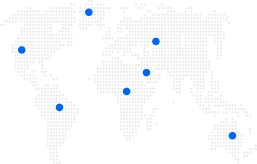The core link of the roll shading structure is that after the mixing is completed, the raw materials enter the extrusion molding stage. The extruder converts the mixed raw materials into a roll with a specific shape and structure by precisely controlling the temperature, pressure and extrusion speed. In terms of temperature control, the raw materials need to be heated to a suitable molten state. Too high a temperature will decompose the PVC and affect the material performance. Too low a temperature will not fully plasticize, resulting in a loose structure. The pressure and extrusion speed are closely matched. The appropriate pressure can ensure that the raw materials are fully compacted in the mold. The stable control of the extrusion speed can make the thickness of the roll uniform and avoid the influence of thickness fluctuations on the shading performance. During the extrusion process, the raw materials form a dense and uniform structure under high temperature and high pressure, and the molecules are closely arranged. It is difficult for light to find a gap to penetrate inside the material, thereby greatly reducing the light transmittance and further enhancing the shading effect.
Consolidation and optimization of shading performance
The roll after extrusion molding also needs to undergo post-processing processes such as coating and surface processing. These steps are like "fine-tuning" for shading performance. During the coating process, special coating materials are applied to the surface of the coil. These coating materials contain additional light-shielding components, which can further absorb the small amount of light that passes through the coil, pushing the light-shielding effect to the extreme. At the same time, the coating also has a protective effect, which can resist the erosion of the coil by external factors such as ultraviolet rays and rain, prevent the internal light-shielding additives from being lost or failing due to environmental factors, and extend the service life of the coil and the stability of the light-shielding performance. The surface processing process treats the surface of the coil by frosting, embossing, etc. to change the surface microstructure. Frosting can reduce the surface gloss, reduce light reflection, and avoid the interference of reflected light to the surrounding environment; embossing can not only enhance the texture of the coil, but also disrupt the light reflection path to a certain extent, further improving the light-shielding performance.
Ensure the consistency of light-shielding performance
In order to ensure that each roll of PVC blockout flex banner roll material has stable and consistent light-shielding performance, a strict full-process quality inspection link is set up during the production process. Starting from the inspection of raw materials entering the warehouse, various indicators of PVC resin and light-shielding additives are tested to ensure that the raw materials meet the production standards. In key processes such as mixing and extrusion, process parameters and semi-finished product status are monitored in real time to promptly detect and correct deviations that may affect shading performance. In the finished product stage, professional shading performance testing equipment is used to simulate the lighting conditions in the actual use environment and accurately measure the light transmittance, reflectivity and other indicators of the coil. Only products whose indicators meet strict standards can enter the market, thereby ensuring the consistency and stability of the product's shading performance between different batches and different production cycles. Through precise control of the entire production process, PVC blockout flex banner roll material is able to stably present shading performance in every application. From the careful preparation of raw materials, to the precise shaping of the structure, to the fine optimization of post-processing and strict quality inspection, every link embodies the wisdom of technology, providing reliable shading solutions for various scenarios, and continuously meeting the market demand for high-quality shading materials.

 English
English CN
CN ES
ES 86-573-88890126
86-573-88890126












